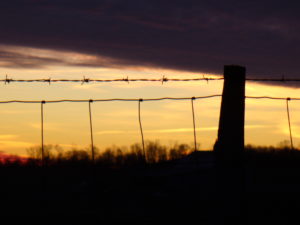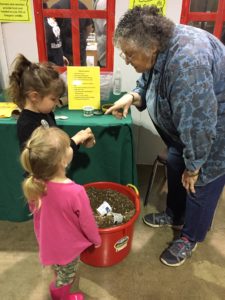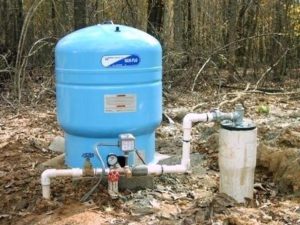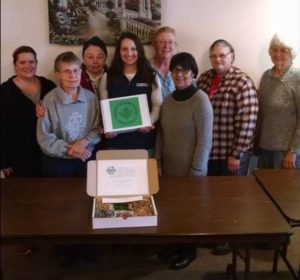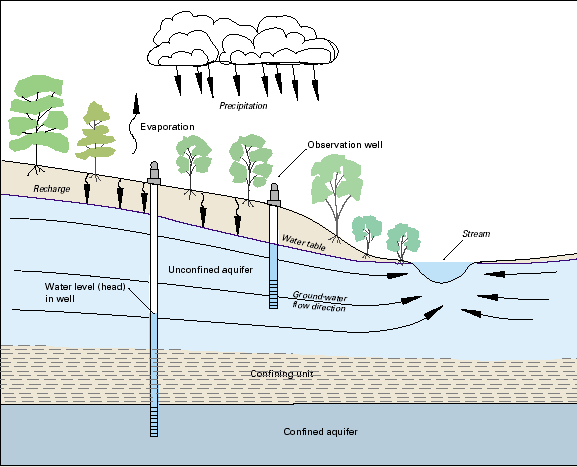Are you ready to obtain a building permit or financing for your rural residential property?

By Laura A. Schroeder and Tara J. Jackson
The answer to this question may depend on the paperwork you have to document domestic water use at the current or planned residence. When either a building permit or financing is required on a rural residential property, the permitting authority or lender will likely require that the domestic water use provided to the residence has either (1) a water use right for a surface water source or (2) a groundwater well that is properly recorded with Oregon Water Resources Department (“OWRD”) as a groundwater use that is exempt from permitting and bearing a well ID tag. ORS 537.130, 537.545(5)-(6), and 537.789.
As hinted at above, domestic water use from a surface water source is not exempt from OWRD’s permit requirements, meaning it is illegal without first obtaining a water use right from OWRD, while domestic use of groundwater within certain limits is allowed with no water use right. ORS 537.141 and 537.545(1)(d). Seems pretty straight forward, right? If the source of domestic water for your residence is above ground, you need to provide your lender or permitting authority proof of your water use right. If the source of domestic water for your residence is below ground, you need to provide proof of proper recording of the exempt use and that the well is fitted with an OWRD issued well ID tag. BUT WAIT, the domestic water use for your property is supplied by a spring? Well, now the question becomes complicated. Is the spring water, surface or groundwater?
If the spring comes to the surface without a “spring box,” possibly considered a well casing, OWRD will qualify the source as a surface water source requiring a water use right, unless OWRD finds that the source is not regulated as “public waters” because it does not leave the boundary of a private property.[1] However, OWRD rarely finds that water rising to the surface is not leaving the private property so this “private water” exception will not be routinely applied by OWRD unless proven by way of a court proceeding.
To obtain a surface water use right for domestic use of the spring at the property, the use would have had to be (a) registered (ORS 539.240), (2) adjudicated by a Court issuing a decree upon which a certificate of water right would be issued by OWRD (ORS 539.140 and 539.150), or (3) applied for and permitted through OWRD’s surface water permitting statutes and rules (ORS 537.130, 537.140; 537.150, 537.153, 537.170, and 537.211; OAR 690-310 and 690-320). Under the third option, OWRD permitting, a two-year processing window can be expected, even if the statutes and rules provide that water is available for such use.
Up to 15,000 gallons of water per day may be used from a groundwater source for domestic purposes under the exemption provided by ORS 537.545(1)(d). Oregon law defines groundwater as “any water, except capillary moisture, beneath the land surface or beneath the bed of any stream, lake, reservoir or other body of surface water within the boundaries for this state, whatever may be the geological formation or structure in which such water stands, flows, percolates or otherwise moves.” ORS 537.515. Accordingly, if development of the spring required excavation this may indicate that the source of the spring would be characterized as groundwater. For example, if the spring comes to the surface with a “spring box,” the water may then be considered groundwater by OWRD. However, at the current time, it is our experience that OWRD will typically find springs to be surface water. Moreover, if OWRD finds the source of a spring developed by excavation, such as a “spring box,” to be groundwater, it may then choose to regulate the “spring box” or similar structure for failing to meet well construction standards. ORS 537.775 and 537.787.
In addition to the uncertainty as to whether OWRD will characterize your spring as groundwater, such that your domestic use will be allowed without a permit, currently OWRD’s administrative rules only accommodate recording of exempt groundwater use registrations for wells. OAR 690-190-0005. Springs are not included in the statutory definition of a well.[2] As a result, a spring similarly does not qualify for a well ID tag. Thus, while use of a spring for domestic purposes without obtaining a water use permit may be allowable under Oregon law, it may not be possible to document the use to the standard that may be required by your lender or permitting authority.
Further, all wells may not be treated equally in the eyes of a lender or permitting authority. While reliance on ORS 537.545(1)(d) for the right to use water for domestic purposes without a permit from a well does not hinge on OWRD’s characterization of the water’s source, as is the case for a spring, it may still prove hard to obtain documentation for certain wells that will satisfy a lender or permitting authority’s requirements. For example, OWRD’s rules accommodate and require recording of exempt groundwater uses from new wells constructed after July 22, 2009. OAR 690-190-0005(2). Thus, while domestic use from wells constructed prior to this date is still allowed under the exemption, the use will not be recorded.[3] OWRD established the process for obtaining well ID tags in 1996. Accordingly, wells constructed prior to 1996 may not bear a well ID tag, but OWRD will issue a well ID tag for wells constructed prior to 1996. ORS 537.791. In the case where the exempt groundwater use from a well is not recorded, a lender may agree to move forward with only documentation that the well is furnished with the required ID tag, but such a determination, is dependent upon the lender.
THE BOTTOM LINE: We love water use right puzzles here at Schroeder Law, but if you have a choice, the most expedient and sure method to move forward smoothly with the building permit or loan approval for your rural residential property is to work with a water well drilling professional to drill an exempt well, tapping the underground water source, and using the exemption for domestic use under ORS 537.545(1)(d). Otherwise, the documentation and analysis becomes complicated quickly!
The Oregon Groundwater Association is a great resource for information on reliable water well drilling professionals. Check out their website here!
Stay tuned to Schroeder Law Offices’ blog for all things water!
[1] Norden v. State by & Through Water Resources Dep’t, 153 Or App 127 (1999)
[2] ORS 537.515(9) defines well as “any artificial opening or artificially altered natural opening, however made, by which groundwater is sought or through which ground water flows under natural pressure or is artificially withdrawn.” The statute goes on to say that a well “does not include a temporary hold drilled for the purpose of gathering geotechnical groundwater quality or groundwater level information, a natural spring or a hole drilled for the purpose of:…”
[3] OWRD rules also require an exempt groundwater use from a well that was converted after July 22, 2009 to allow groundwater use for purposes that are exempt under ORS 537.545 after July 22, 2009 to be recorded. OAR 690-190-0005(2).
